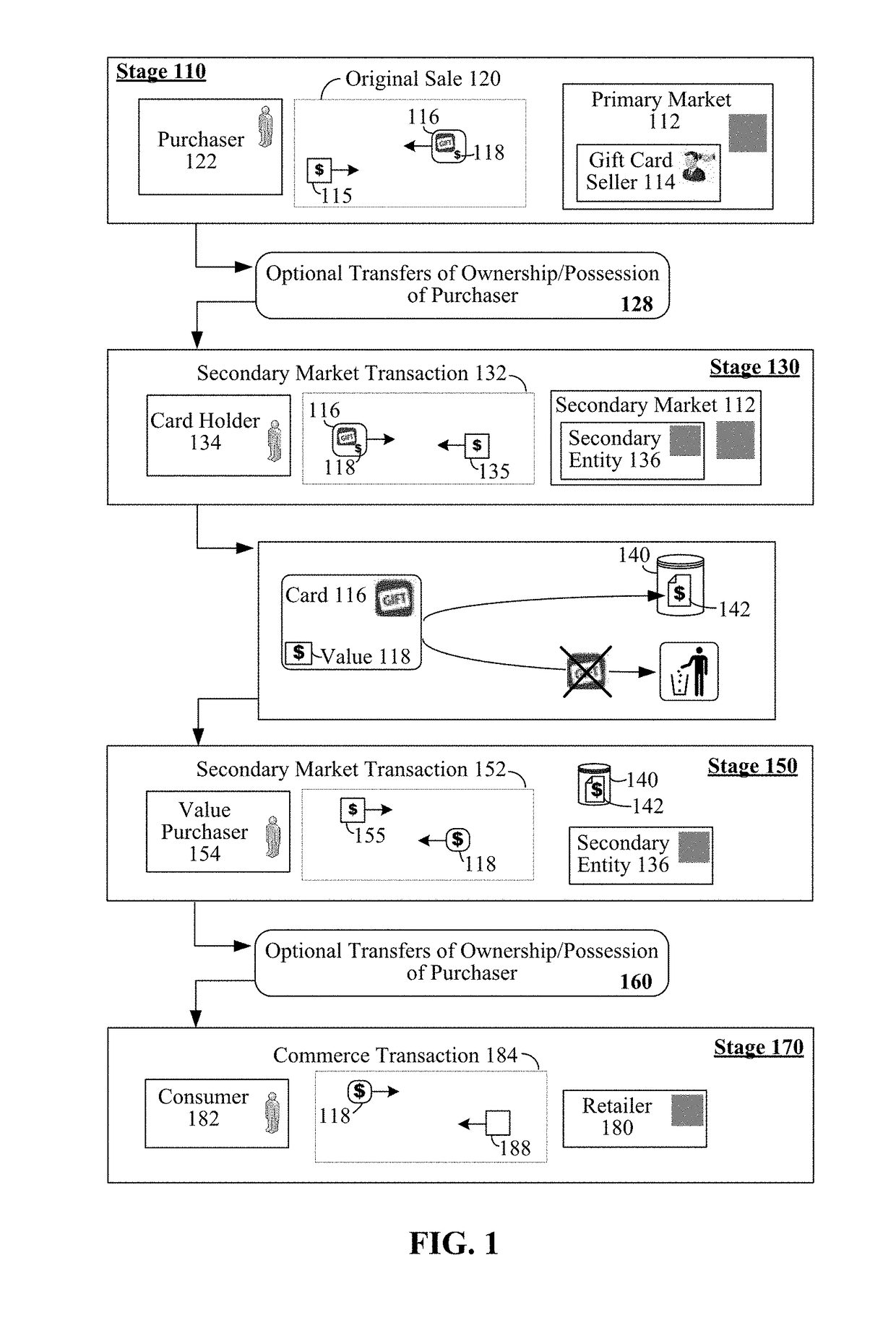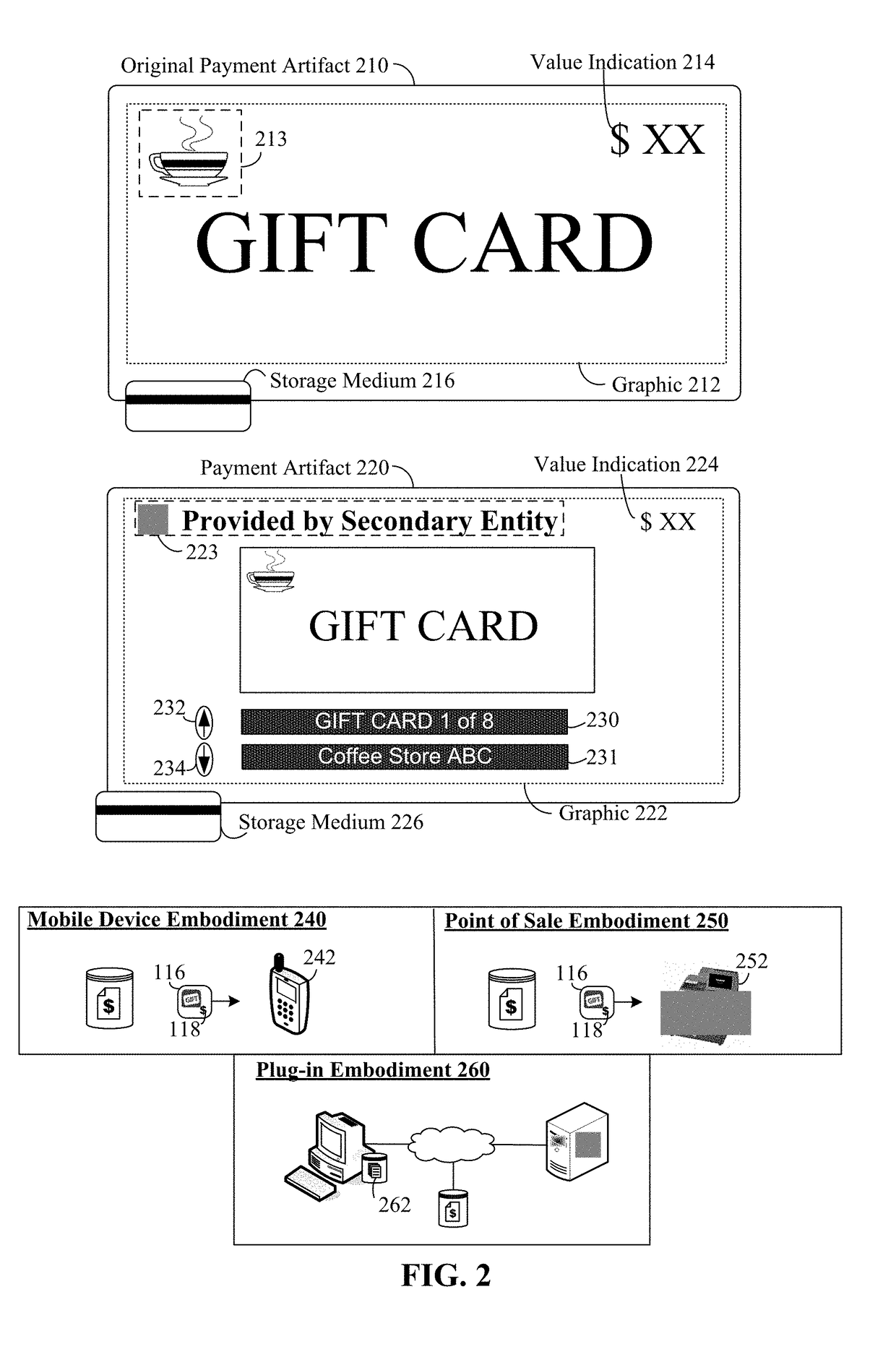Secondary market for gift cards where secondary market transactions do not physically transfer the same gift card between a seller and a purchaser
a gift card and secondary market technology, applied in the field of gift cards, can solve the problems of only usable credit value of gift cards and lack of valu
- Summary
- Abstract
- Description
- Claims
- Application Information
AI Technical Summary
Benefits of technology
Problems solved by technology
Method used
Image
Examples
embodiment 240
[0039]Another contemplated embodiment (shown as embodiment 240) permits a value purchaser to access the credit value using his / her mobile device 242. For example, an ANDROID based phone can include a gift card application, which enables credit values 118 from the original gift card 116 to be utilized for purchases. In one embodiment, purchases (ones that utilize value 118) can be conducted via a retailer's Web site (straight from an internet-enabled browser of device 242). In one embodiment, the device 242 can display or transmit a code including a bar code, which a point of sale device of the retailer can read, which causes credit value 118 to be utilized during a commerce transaction 184.
embodiment 250
[0040]In point of sale embodiment 250, a point of sale device 252 can be utilized to conduct secondary market transactions 132 and 152. For example, a person can initiate the commerce transaction 184 and pay by credit card or debit card via a point of sale device 252 (e.g., card reader). The card-reader 252 can be integrated with secondary market functionality. The card reader 252 (or a computing device connected to the card reader) can execute programs that determine the consumer using the point of sale device is part of a gift-card secondary market network. Running code can then determine that a credit value exists for the retailer, which is available for less than face value (representing a savings for the consumer). The savings can trigger other code to exchange a quantity of “cash” or money obtained from the credit card / debit card scanned by the point of sale device 252 for a quantity of the credit value.
[0041]From a consumer perspective, the secondary market transactions occur...
embodiment 260
[0044]In one embodiment (a contemplated variant of embodiment 260), the consumer completing a purchase (commerce transaction 184) may be completely unaware that credit value 118 was used in lieu of negotiable funds (e.g., cash or cash equivalent). Instead, a facilitating agency involved in the commercial transaction (e.g., company providing point of sale services / equipment, PAYPAL, GOOGLE CHECKOUT, a credit card company, etc.) can institute the automatic substitution of credit value 118 for negotiable credit. This automatic substitution can result in a financial gain, which the facilitating agency receives (at least in part) for their services—all without negatively impacting the consumer or the retailer (who has already received compensation for the pre-paid credit value).
[0045]FIG. 3 is a flow chart for secondary market transactions for credit value of gift cards in accordance with an embodiment of the illustrative arrangements disclosed herein.
[0046]The flow chart shows a seconda...
PUM
 Login to View More
Login to View More Abstract
Description
Claims
Application Information
 Login to View More
Login to View More - R&D
- Intellectual Property
- Life Sciences
- Materials
- Tech Scout
- Unparalleled Data Quality
- Higher Quality Content
- 60% Fewer Hallucinations
Browse by: Latest US Patents, China's latest patents, Technical Efficacy Thesaurus, Application Domain, Technology Topic, Popular Technical Reports.
© 2025 PatSnap. All rights reserved.Legal|Privacy policy|Modern Slavery Act Transparency Statement|Sitemap|About US| Contact US: help@patsnap.com



